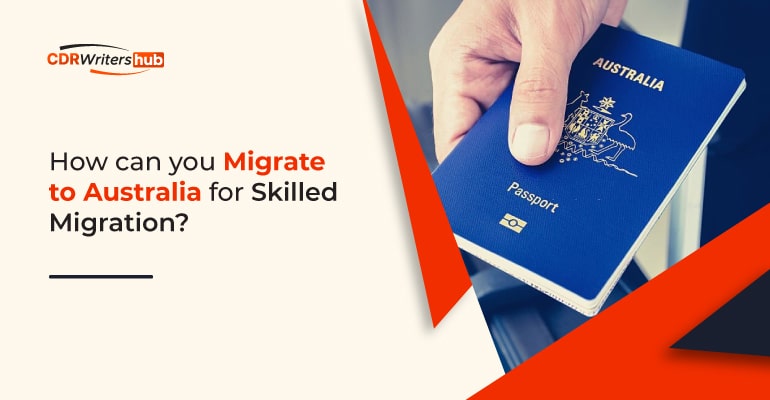How can you migrate to Australia for Skilled Migration?

How can you migrate to Australia for Skilled Migration?
Are you looking for opportunities to migrate abroad? Well, you landed in the right place. Here we will give you some insights on how to relocate overseas, especially to Australia, and its process in detail.
Australia has welcomed migrants from all corners of the world. Australia needs to fulfill the employment gap of skilled personnel, and the demand increases every year. You can check the skilled occupations list for the demanding professions every year. Skilled professionals have more chances of getting the opportunity to work and live in Australia. Here are some of the steps you can take to migrate to Australia.
1. Research your field of occupation
Table of Contents
Which field of occupation do you belong to? Are you familiar with the skilled occupation list? Is your occupation listed in it? These are some of the questions you need to ask yourself. You need to know what employment opportunities are currently trending in Australia for future employment assurance.
2. Visa options
Individuals who are qualified to work or develop in an appropriately skilled occupation in Australia and meet all other requirements may apply for the following visas according to the immigration department of Australia.
- Employer Nomination Scheme (ENS) visa (subclass 186)
- Regional Sponsored Migration Scheme (RSMS) visa (subclass 187)*
- Skilled Independent visa (subclass 189) – Points-tested stream
- Skilled Nominated visa (subclass 190)
- Training visa (subclass 407)
- Temporary Skill Shortage (TSS) visa (subclass 482)
- Temporary Graduate visa (subclass 485) – Graduate Work
- Skilled Regional (Provisional) visa (subclass 489)
- Skilled Work Regional (Provisional) visa (subclass 491)
- Skilled Employer-Sponsored Regional (provisional) visa (subclass 494).
Each occupation is classified using the Australian and New Zealand Standard Classification of Occupations (ANZSCO). The ANZSCO provides information on job skill levels, qualifications, and/or experience required to work in occupations, caveats that prevent the occupation from being used in certain circumstances (applicable only to the ENS and TSS visas), and whether the occupation is listed on the Medium and Long-term Strategic Skills List (MLTSSL), the Short-term Skilled Occupation List (STSOL), the Regional Occupation List (ROL), or the Regional Sponsored Migration Scheme (RSMS).
3. Check visa details and conditions
After selecting your visa, visa holders, employers, education providers, and other organizations can use Visa Entitlement Verification Online (VEVO) to check visa data and requirements.
VEVO provides you with information on your current in-effect visa:
- Which visa do you need?
- The expiration date must not be later than the deadline.
- The duration of your stay (how long you can stay) and the terms of your visit (what you can and can’t do).
VEVO cannot give information about visas that are not currently in effect. For example, if you have a Bridging visa but your substantive visa has not yet expired.
Benefits from permanent residency opportunity

By applying for and receiving a permanent visa that allows you to stay in Australia indefinitely, you can become a permanent resident of Australia. Some skilled job and family visas are the most prevalent permanent visas. An Australian permanent resident is not the same as an Australian citizen. As a permanent resident of Australia, you can generally:
- Stay in Australia indefinitely;
- Work and study in Australia;
- Apply for bank loans to purchase a home in Australia;
- Sponsor qualified relatives for permanent residence in Australia;
- Apply for citizenship in Australia,
- Travel as far as your travel facility will allow you to go to and from Australia.
You may be eligible for additional government perks and services. You may be ineligible for the aforementioned if you have a permanent visa but are not residing in Australia. Contact the proper government offices or authorities to confirm your rights and obligations. Unlike Australian citizens, permanent residents are often unable to:
- Have an Australian passport
- Vote in Australian Government elections
- Access student loans
- Obtain ongoing work in the Australian Government
CDRWritersHub for further assistance
Skilled professionals have to go through the CDR pathway if their qualification is listed in the selected Accords. This is where CDRWritersHub falls into place. EA-approved CDR Reports, RPL reports, plagiarism-free writing, on-time delivery, and 24-hour support from experts for a positive skill assessment. You must double-check each information in the CDR Report because it is commonly rejected owing to multiple inaccuracies. And you have no idea that you’ve made any mistakes. A review of your CDR Report protects you from long-term loss and helps you migrate to your preferred location.



